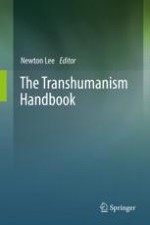2019 | OriginalPaper | Chapter
3. The Boundaries of the Human: From Humanism to Transhumanism
Author : José Luis Cordeiro
Published in: The Transhumanism Handbook
Publisher: Springer International Publishing
Activate our intelligent search to find suitable subject content or patents.
Select sections of text to find matching patents with Artificial Intelligence. powered by
Select sections of text to find additional relevant content using AI-assisted search. powered by
Abstract
-
A new philosophy has been proposed to continue the ideas of humanism in a new world where science and technology are the major drivers of change. Julian Huxley, the English evolutionary biologist and humanist that became the first director-general of UNESCO and founder of the World Wildlife Fund, wrote that “the human species can, if it wishes, transcend itself —not just sporadically, an individual here in one way, an individual there in another way, but in its entirety, as humanity. We need a name for this new belief. Perhaps transhumanism will serve: man remaining man, but transcending himself, by realizing new possibilities of and for his human nature”. Huxley originally published those words in his essay Religion Without Revelation, which was reprinted in his book New Bottles for New Wine (1957). The philosophy of transhumanism has greatly advanced since Huxley first used that word, particularly during the beginning of the twenty-first century since it is now clear than humans are not the end of evolution but just the beginning of a conscious and technological evolution.
